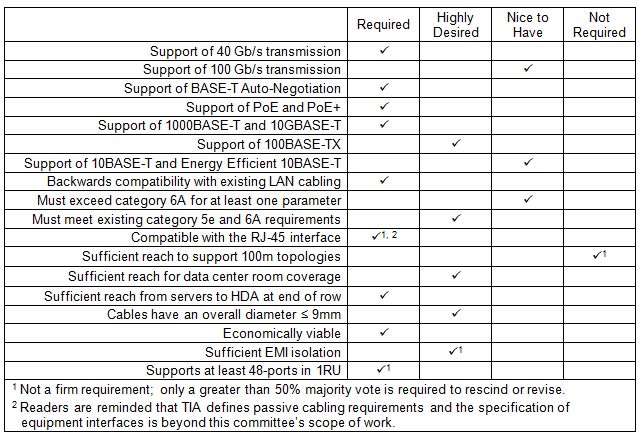Adoption of 10 Gigabit Ethernet (10GBASE-T) in the data center
Here’s a good video from a Siemon Emerging Technology Forum event where Aquantia, Cisco, Intel and Siemon teamed up to discuss 10GBASE-T adoption in the data center. While the video is a little over a year old, I mention it because the message is still valid: 10GBASE-T makes a lot of sense for data centers. The continued adoption of 10GBASE-T over the last year proves it.
http://www.youtube.com/watch?v=rmj1n3W7pSA&feature=youtu.be
Panel contributors included:
- Sudeep Goswami, Product Line Manager of Cisco’s Server Access and Virtualization Business Unit and group chair for the Ethernet Alliance 10GBASE-T committee
- Dave Chalupsky, Intel Network Architect
- Carl Hansen, Senior Product Manager with Intel’s Data Center Standards group
- Carrie Higbie, Siemon’s Global Director of Data Center Solutions & Services
- Sean Lundy, Director of Technical Marketing at Aquantia.
Among the event highlights were Aquantia and Intel experts providing insight on how chip innovations from their respective companies were expected to significantly drive down 10GBASE-T power requirements for more energy-efficient green 10GbE networks.
Regarding widespread commercial availability of 10GBASE-T equipment, Cisco’s Sudeep Goswami stated that Cisco is serious about 10GBASE-T and discussed the company’s support for 10GBASE-T with their Nexus and Catalyst product lines.
According to Siemon’s Carrie Higbie, category 6A and higher connectivity is being planned in new data centers, “85% of the new data center designs I see are cabling for 10GBASE-T.” Higbie also noted a continuing upswing in the global use of shielded cabling for 10GBASE-T, including the traditional UTP dominant markets such as the US.
Siemon has been marketing and selling 10GBASE-T ready cabling since 2004 and now that 10GBASE-T equipment and power consumption is becoming more economical, the time has come for customers to take full advantage of their category 6A and higher cabling investment.


